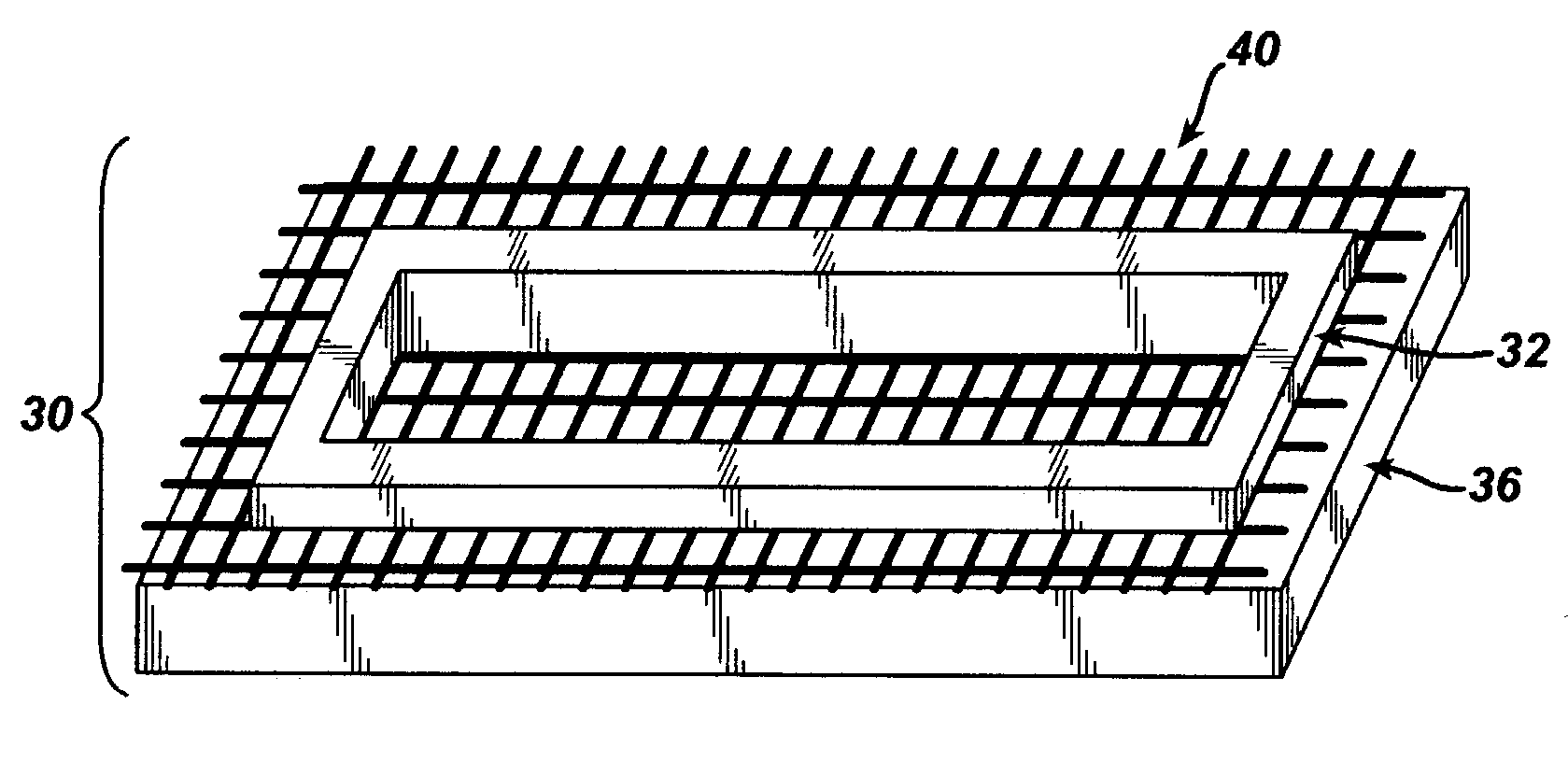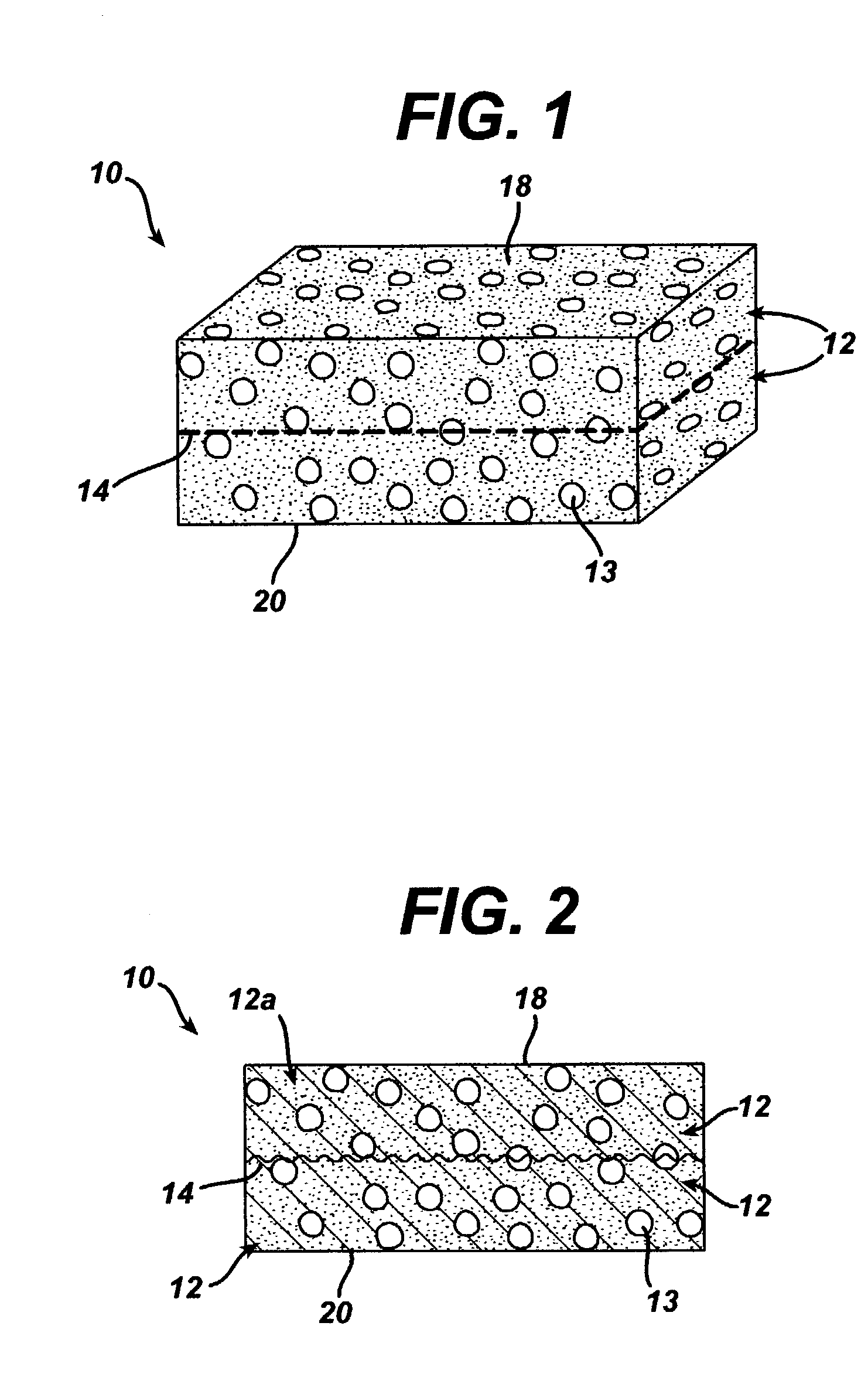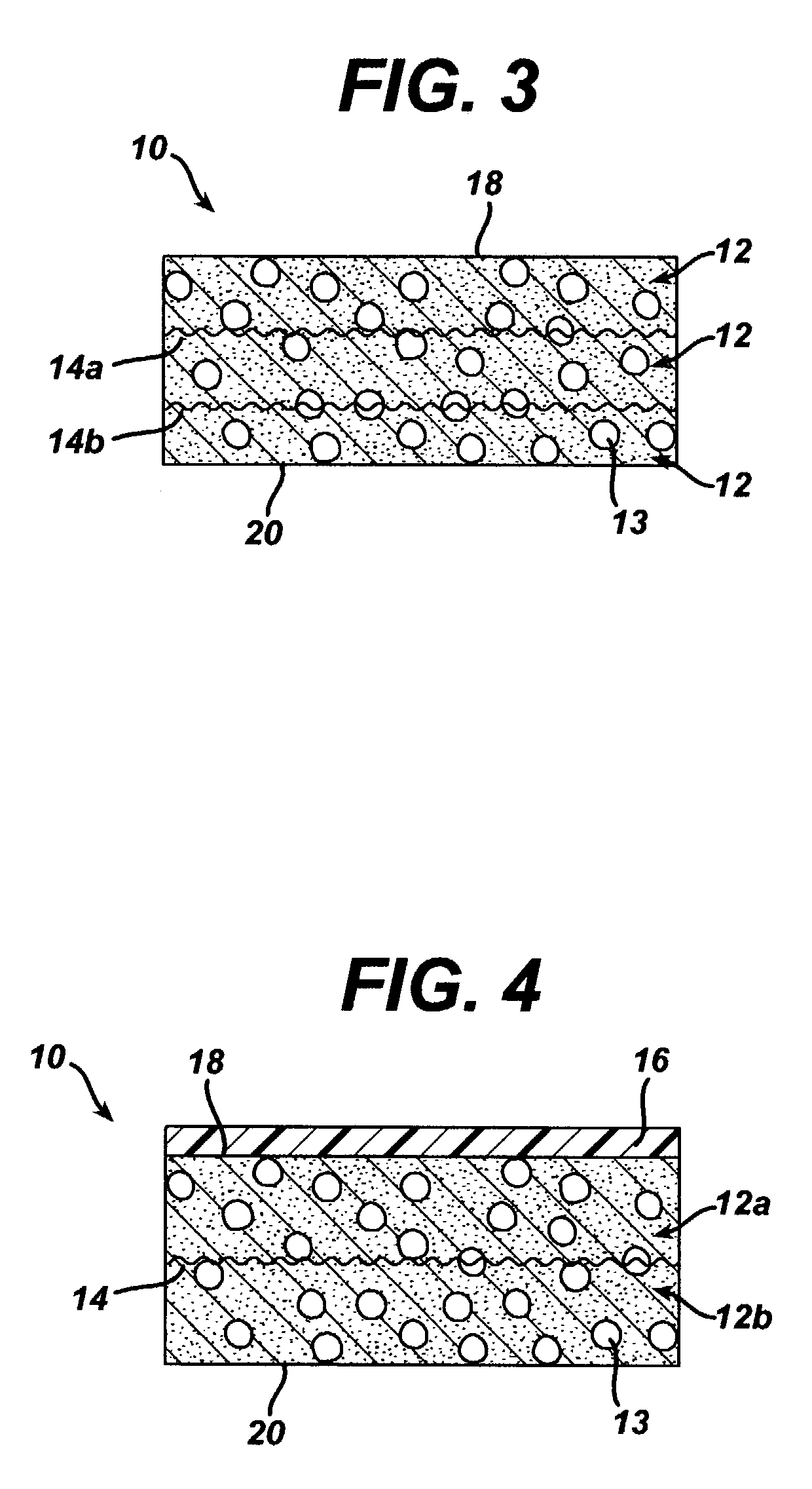Method of preparation of bioabsorbable porous reinforced tissue implants and implants thereof
a technology of bioabsorbable porous and reinforced tissue, which is applied in the field of methods, can solve the problems of vesicovaginal fascia injury, damage to the rotator cuff, and potential serious medical conditions
- Summary
- Abstract
- Description
- Claims
- Application Information
AI Technical Summary
Benefits of technology
Problems solved by technology
Method used
Image
Examples
example 1
[0081]Unannealed 95 / 5 poly(lactide-co-glycolide yarn mesh unquenched and quenched (constructs YUU and YUQ):
[0082]This example describes the preparation of a three-dimensional elastomeric tissue implant with a 95 / 5 poly(lactide-co-glycolide) mesh reinforcement produced according to the methods described in the existing art and in the manner as described in this work, namely quenching the mold assembly after adding the polymer solution.
[0083]A solution of the polymer to be lyophilized to form the foam component of both constructs was prepared. A 5% solution (by weight) of 60 / 40 poly(lactide-co-caprolactone) in 1,4-dioxane was made in a flask placed in a water bath stirring at 60° C. for 5 hours. The solution was filtered using an extraction thimble and stored in a flask.
[0084]The mesh used as the reinforcement in the constructs of this example was made from 95 / 5 poly (lactide-co-glycolide) yarn. Pieces of the mesh, cut to dimensions slightly larger than the stretcher and clamp apparat...
example 2
[0089]Annealed 95 / 5 poly(lactide-co-glycolide) yam mesh unquenched and quenched (constructs YAU and YAQ):
[0090]This example is identical to Example 1 with the exception that in this example, the 95 / 5 poly(lactide-co-glycolide) yarn mesh was annealed prior to processing.
[0091]The meshes were scoured according to the procedure delineated in Example 1. The scoured meshes were placed in stretcher and clamp devices used to hold the meshes flat and taut. The mesh / device assemblies were then placed in an inert gas annealing oven and annealed at 120° C. for 3 hours. The remainder of the experiment was conducted in the same manner as Example 1 with one annealed mesh being left unquenched and the other mesh being quenched. The lyophilization cycle was also the same.
[0092]It was found that the addition of the quenching step resulted in reinforced constructs in which less dissolution of the reinforcing fibers took place. Without quenching, regions of the mesh were observed to begin to dissolve ...
example 3
[0093]Unannealed 95 / 5 poly(lactide-co-glycolide) monofilament mesh unquenched and quenched (constructs MUU and MUQ):
[0094]The same procedure as described in Example 1 was used in this example with the exception that 95 / 5 poly(lactide-co-glycolide) monofilament was used to make the mesh instead of multifilament yarn. The only other difference was the size of the mold used. In this example, the same 5% (by weight) 60 / 40 poly(lactide-co-caprolactone) solution in 1,-4-dioxane was poured into smaller aluminum molds (15.3×7 cm2). Therefore, 40 g of polymer solution was sufficient to fully cover the bottom of the mold. Again, the meshes were scoured according to the procedure delineated in Example 1, and the scoured monofilament meshes constrained by the stretcher and clamp device were placed into the polymer-containing molds. One mold was placed directly on the shelf of the lyophilizer after placement of the mesh and lyophilized according to the cycle delineated in Example 1. The other me...
PUM
| Property | Measurement | Unit |
|---|---|---|
| Solubility (mass) | aaaaa | aaaaa |
| Freezing point | aaaaa | aaaaa |
| Tension | aaaaa | aaaaa |
Abstract
Description
Claims
Application Information
 Login to View More
Login to View More - R&D
- Intellectual Property
- Life Sciences
- Materials
- Tech Scout
- Unparalleled Data Quality
- Higher Quality Content
- 60% Fewer Hallucinations
Browse by: Latest US Patents, China's latest patents, Technical Efficacy Thesaurus, Application Domain, Technology Topic, Popular Technical Reports.
© 2025 PatSnap. All rights reserved.Legal|Privacy policy|Modern Slavery Act Transparency Statement|Sitemap|About US| Contact US: help@patsnap.com



